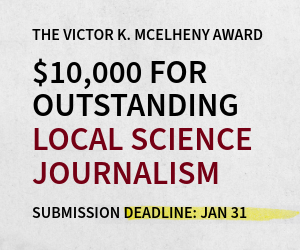Update: If you would just listen to the facts…
Janet Raloff, a friend of mine and a senior editor at Science News, has weighed in on the topic of how scientists can communicate effectively with the public on divisive issues such as climate change. In her May 29 online article, Climate skepticism not rooted in science illiteracy, she reports on an interview with Dan Kahan of Yale Law School, one of the authors of the Nature Climate Change article I cited in my previous posting. Raloff explores several approaches to interacting with a polarized public in her May 30 follow-up article, Depolarizing climate science.
What comes through most strongly in these articles is that divisions occur when scientific findings have a direct relevance to things that affect us every day, or findings that could make significant changes in our everyday lives. As far as I know, The Heartland Institute has not posted any billboards comparing people who believe in black holes or the law of gravity with Unabomber Ted Kaczynski. We accept these things because we can do so without making any changes in our daily routines.
Raloff cites political scientist Arthur Lupia of the University of Michigan in Ann Arbor, who states that some of the most science-literate critics will listen to experts only to generate compelling counterarguments. What’s stopping climate scientists from doing the same thing — listening to the most rational, articulate deniers and opponents of climate change legislation in order to scope out what matters most to climate change deniers and formulating compelling counterarguments of their own?
Disruptive innovation is another possible approach — one that sidesteps the battleground altogether by providing people with alternatives that they adopt readily because they see a clear benefit to the new technologies. After all, no one waged a political war against paper phone books, wristwatches, or the Sony Walkman, and yet those things have almost completely fallen out of use by Americans under the age of 30, in favor of smartphones, smartphones, and smartphones. The main problem with this approach is that disruptive innovations are notoriously unpredictable. We cannot guarantee the timely arrival and widespread adoption of any particular form of alternative energy or resource-conserving capabilities.
So for now, we are stuck with learning to talk to each other. Which is something that we needed to do anyway.
This posting first appeared on June 8, 2012 in Nancy McGuire's science blog, Word Chemist.



